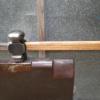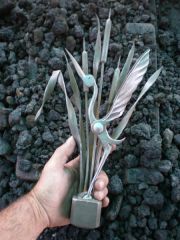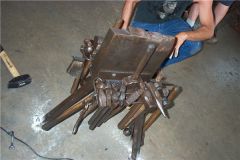-
Posts
1,683 -
Joined
-
Last visited
Content Type
Profiles
Forums
Articles
Gallery
Downloads
Events
Everything posted by brianbrazealblacksmith
-
Chris, I don't know how to draw on the computer yet. Give me a call anytime. 559-679-4106 The 1045 can work if you're making hammers out of 1045, but 4140 is tougher. I'd rather be making hammers out of 1045 because it yeilds to the hammer much easier than 4140, but I'd rather make the punches out of 4140 or 5160. Brian



